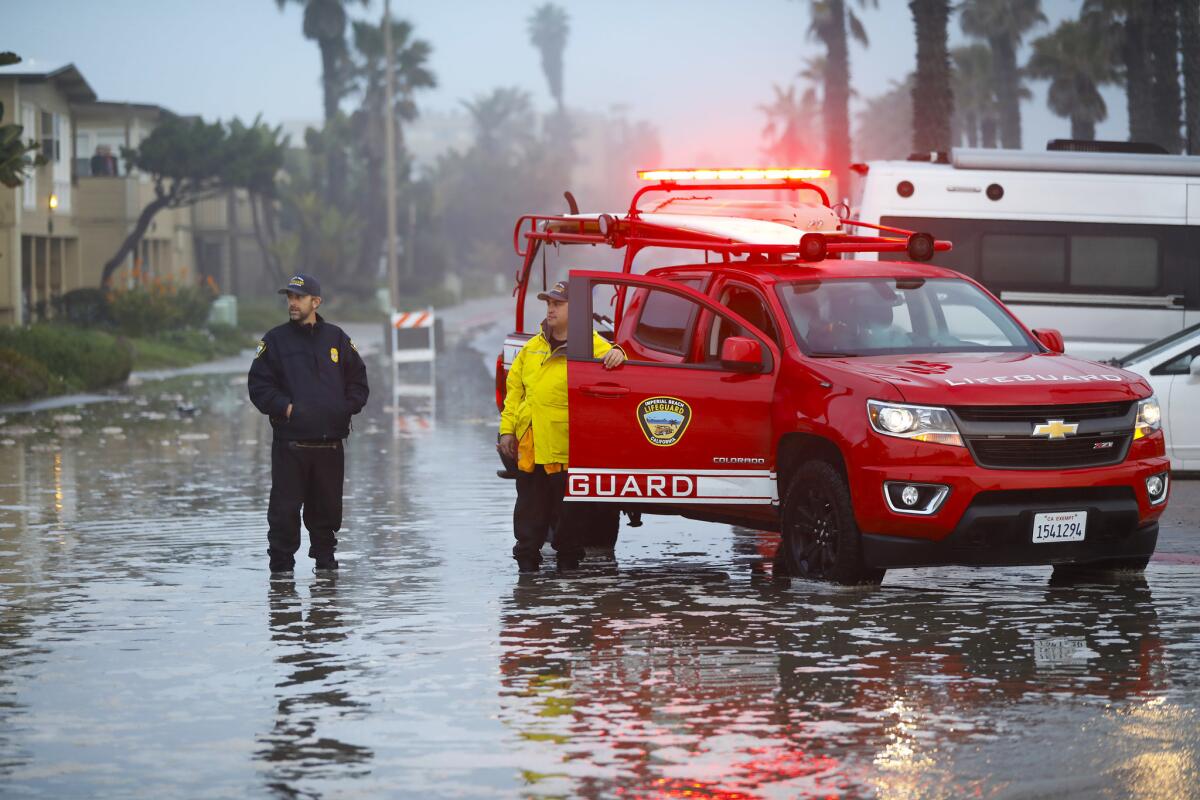Sea levels are rising. California needs to get serious about the problem

- Share via
A new report from the state Legislative Analyst’s Office spotlights a dangerous incongruity in how California approaches two issues involving global warming: the push to reduce emissions of Earth-warming greenhouse gases and what to do about the already-rising seas. While the state has been an international leader on the former, it is woefully behind on the latter. California has not done what it should to prepare for coastal erosion, sea incursions into low-lying areas (including sensitive wetlands), storm-surge flooding of shore communities or the possible need for a forced retreat from imperiled developments at the ocean’s edge.
As the report points out, most of the decisions on how to adapt to rising seas belong to local governments, yet few are paying significant attention — even though estimates suggest a six-inch rise in sea level in the next decade, which, especially during storms and extreme tides, would increase flooding of many beach communities.
Municipalities need to get focused. In the face of such a significant threat, the state needs to work with a sense of urgency with local governments and the California Coastal Commission and other state agencies to forge strategies for countering or adapting to the rising seas. The legislative analyst’s report makes a number of recommendations, including creating regional “collaboration groups” so that local governments can work together — with the help of state funding — to assess vulnerable areas, craft pilot programs and run awareness campaigns to transform the public debate, among other steps.
Without endorsing the specifics, it makes sense — in fact, it seems absolutely necessary — for state government to play a strong leadership role in helping local and regional governments figure out what their coastal future will be.
This does not mean that California should ease up on reducing carbon emissions. That, combined with similar efforts around the world, is vital to limiting the worst effects of global warming. But we also must confront the reality that changes are underway, and that conditions will worsen even if efforts to radically reduce carbon emissions have an impact. It is most likely too late to keep the sea level from rising half a foot in the next decade, and between 1 and 2 feet by 2050.
But the sea rise may be even greater than that. Scientific studies released this week found that the Greenland ice mass is melting faster than experts previously thought, and that rising temperatures in the Arctic are leading to mass releases of methane from thawing tundra in Alaska, Canada, exposed areas of Greenland and the vast expanse of Siberia.
As we’ve argued before, fighting global warming — both reducing the rise in temperatures and adapting to the effects — will not be cheap. But to do nothing, or too little, would be foolish in the face of what’s undeniably ahead.
More to Read
A cure for the common opinion
Get thought-provoking perspectives with our weekly newsletter.
You may occasionally receive promotional content from the Los Angeles Times.









